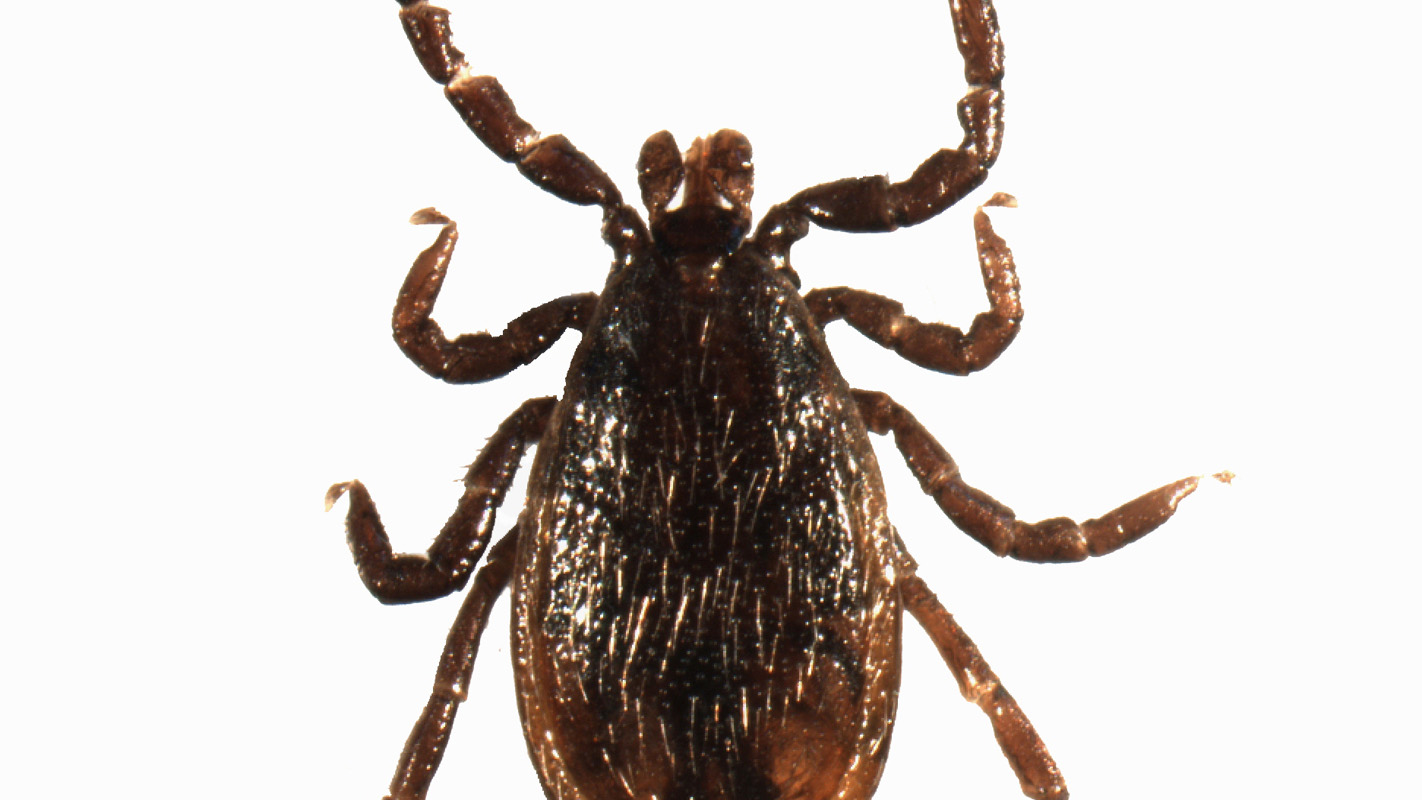Duplicate DNA a Hallmark of Tick Genome

Media Advisory
Researchers have sequenced the genetic blueprint of one of the most prolific pathogen-transmitting agents on the planet – the Lyme-disease-spreading tick (Ixodes scapularis) that bites humans. The findings could lead to advances in not only disrupting the tick’s capacity to spread diseases but also in eradicating the pest.
The large tick genome – smaller than but similar in complexity to the human genome – supports redundancy, said R. Michael Roe, William Neal Reynolds Distinguished Professor of Entomology at North Carolina State University and a co-author of a paper published in Nature Communications that describes the tick genome. Roe said that the size and complexity of the genome – combined with its duplicative elements – were problematic for tick researchers.
“Repetition makes assembly more challenging,” Roe said.
Roe focused his work on the processes that help ticks find each other and mate; how ticks produce eggs and the hormones that regulate egg production; what makes ticks bite; and how ticks feed and process their blood meals.
“We identified the hormones used for development, the process of how ticks utilize the blood that they eat, and how they convert that blood into eggs,” Roe said.
Besides repetitive elements, Roe noted important differences between the tick genome and insect genomes.
“We know from previous work that, at the genome level, ticks do not control their development like insects,” Roe said. “For example, ticks don’t have a juvenile hormone that insects have. That hormone is responsible for color, molt patterns, migration activity and many other functions in insects. That’s important because some of the safer insecticides are based on upsetting the juvenile hormone balance.”
Tick females have a hormone that regulates egg development. Learning how to block that hormone could lead to the development of a “birth-control pill” that would go a long way toward eradicating the pest, Roe said.
Roe said knowledge gleaned from the genome could be used to develop new ways to attract and trap ticks in order to disrupt their “love at first touch” mating practices. Studying the ways ticks are attracted to humans could be used to produce new tick repellents, including natural repellents; Roe and colleagues at NC State are currently developing such products.
The project was led by corresponding author Catherine Hill at Purdue University. Postdoctoral researchers Brooke W. Bissinger, Jiwei Zhu and Sayed Khalil are NC State co-authors on the paper. Funding from the National Science Foundation and the National Institutes of Health supported the work.
– kulikowski –
Note to editors: An abstract of the paper follows.
“Genomic insights into the Ixodes scapularis tick vector of Lyme disease”
Authors: Monika Gulia-Nuss, Catherine A. Hill, Purdue University; R. Michael Roe, Brooke W. Bissinger, Jiwei Zhu, North Carolina State University; et al
Published: Online Feb. 9, 2016, in Nature Communications
DOI: 10.1038/NCOMMS10507
Abstract: Ticks transmit more pathogens to humans and animals than any other arthropod. We describe the 2.1 Gbp nuclear genome of the tick, Ixodes scapularis (Say), which vectors pathogens that cause Lyme disease, human granulocytic anaplasmosis, babesiosis and other diseases. The large genome reflects accumulation of repetitive DNA, new lineages of retrotransposons, and gene architecture patterns resembling ancient metazoans rather than pancrustaceans. Annotation of scaffolds representing B57% of the genome, reveals 20,486 protein-coding genes and expansions of gene families associated with tick–host interactions. We report insights from genome analyses into parasitic processes unique to ticks, including host ‘questing’, prolonged feeding, cuticle synthesis, blood meal concentration, novel methods of haemoglobin digestion, haem detoxification, vitellogenesis and prolonged off-host survival. We identify proteins associated with the agent of human granulocytic anaplasmosis, an emerging disease, and the encephalitis-causing Langat virus, and a population structure correlated to life-history traits and transmission of the Lyme disease agent.
- Categories:


